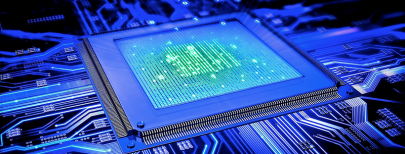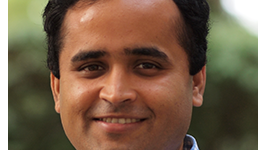The CEO of DataCore, George Teixeira, delivers his vision of the software defined market storage through recent announcements
The new edition of SANsymphony PSP is a milestone for DataCore’s flagship products, SANsymphony V10 and Virtual San. DataCore has a track record for many years now in unifying multiple available storage environments on the storage market. The software publisher is straightforward : whether we are talking about hyperconvergence, virtual or physical SAN or cloud storage, both Sansymphony V10 and Virtual San support them all. DataCore’s software services are listed by the publisher in four categories : availability, performance, efficiency and of course storage infrastructures management.
Storage and Cloud, an essential tandem
Among the recent proposed improvements to the management part, DataCore has committed to integrate its software with cloud environments. After Microsoft Azure which was the premier platform supported and Amazon Web Services, DataCore has added support of the de facto standard Openstack including Cinder. It has been impossible nowadays to ignore Openstack because the majority of equipment manufacturers and vendors operating in the storage sector support it. It therefore has become an obvious way to open up to many private and hybrid platforms. Openstack goes along with another big trend of hyperconvergenced servers where computing, storage and network are combined on standard x86 server hardware. On the datacenter side, DataCore plays on both fronts: distributed and multi-tenancy.
SDS Services everywhere
On the Software Defined Storage side, new uses like VDI have appeared that justify investing in SDS infrastructure. According to George Teixeira, the target in this market are small and medium-sized enterprises or departmental organizations with smaller installations up to 500 seats. One of the main obstacles to the adoption of VDI was that performance was inevitably linked to expensive storage infrastructure such as Flash. DataCore has specialized for over two years on the VDI business by combining the functions of its virtual storage infrastructure and the latest technology, enabling its customers to reduce the costs. For example, inputs / outputs are optimized by performing certain tasks directly by using memory as intelligent caching instead of relying on flash memory. Equally noteworthy improvements relate to the automation and management side of VDI deployments. Additional features are deduplication and compression performed in the background for some clustered virtual disks in pools. Support for Veeam environment (through scripts) helps improve the automation and centralization of these tasks on VMware environments. SANsymphony PSP also features a centralized dashboard for different geographically distributed SANsymphony environments while providing finer granularity in terms of administration on remote sites.
Improved input/Output performance
DataCore has worked on I/O at different levels, starting with the arrival of new metrics for virtual disks and pushing alerts on physical environments. Technologically, the access to flash memory resources has also been reworked. Along the same lines, the Random Write Accelerator feature uses memory as a superfast cache in order to write data sequentially on the drives and not in a dispersed manner, optimizing the latency induced by the access to the data.
SDS and Hyperconvergence through partnerships
The idea of hyperconvergence is based on standard physical hardware servers which consolidate computing, storage and network to facilitate the expansion of data centers and company infrastructures which always need more power. The storage market is no exception to this trend. Being agnostic to the hardware, DataCore’s SDS solution has been discussed with different physical platform providers. Huawei, Fujitsu, Dell, Lenovo or Cisco are today partnering with DataCore. For the company’s CEO and co-founder, hyperconvergence is a natural evolution of IT. Regarding SDS, the market’s software evolution about software defined storage to which he was a pioneer in 1998, eventually proved him right. So much so that according to George Teixeira, the result of this convergence is inevitable, which he summed up in one sentence: “the future of storage is the server.” George Teixeira also evoked very positive growth perspectives through partnerships like the one signed last March with Huawei and the ongoing talks with the second largest Chinese manufacturer Lenovo, which if successful, will make two new giants emerge with a very strong hunger to conquer the hyperconverged server market…
© HPC Today 2024 - All rights reserved.
Thank you for reading HPC Today.

































